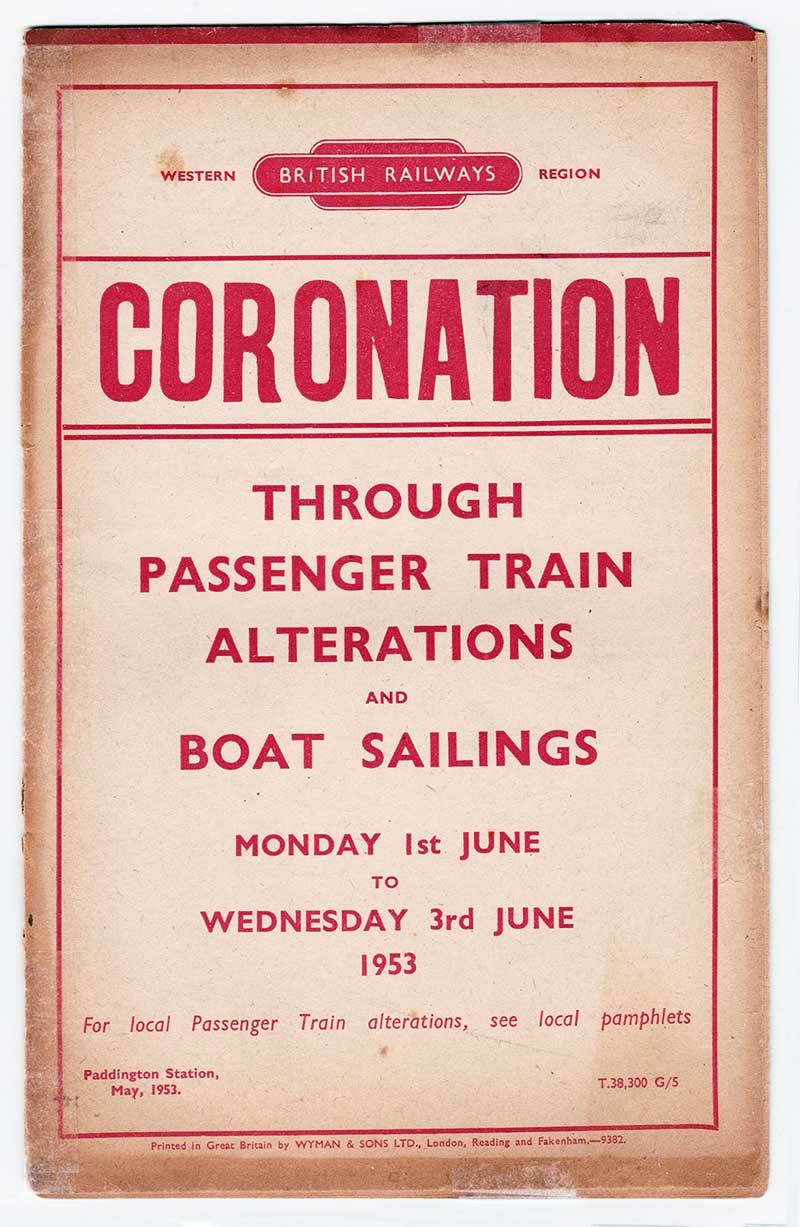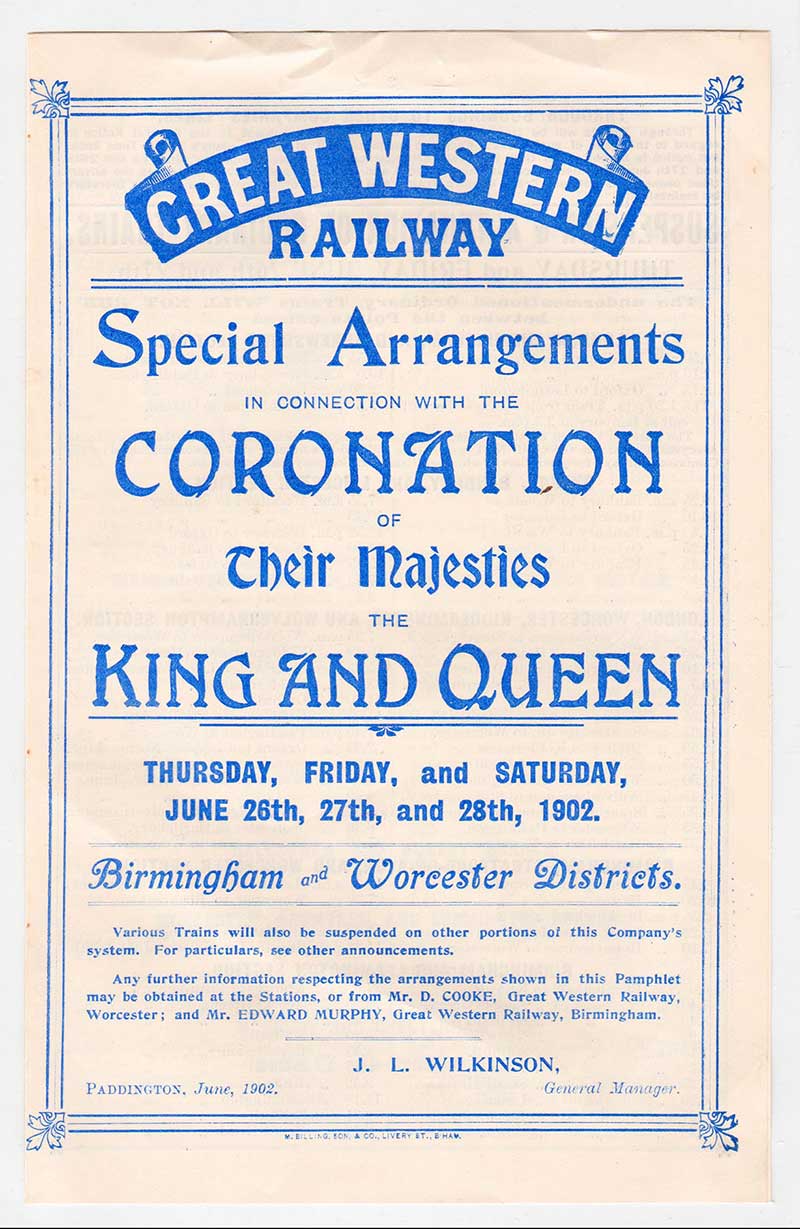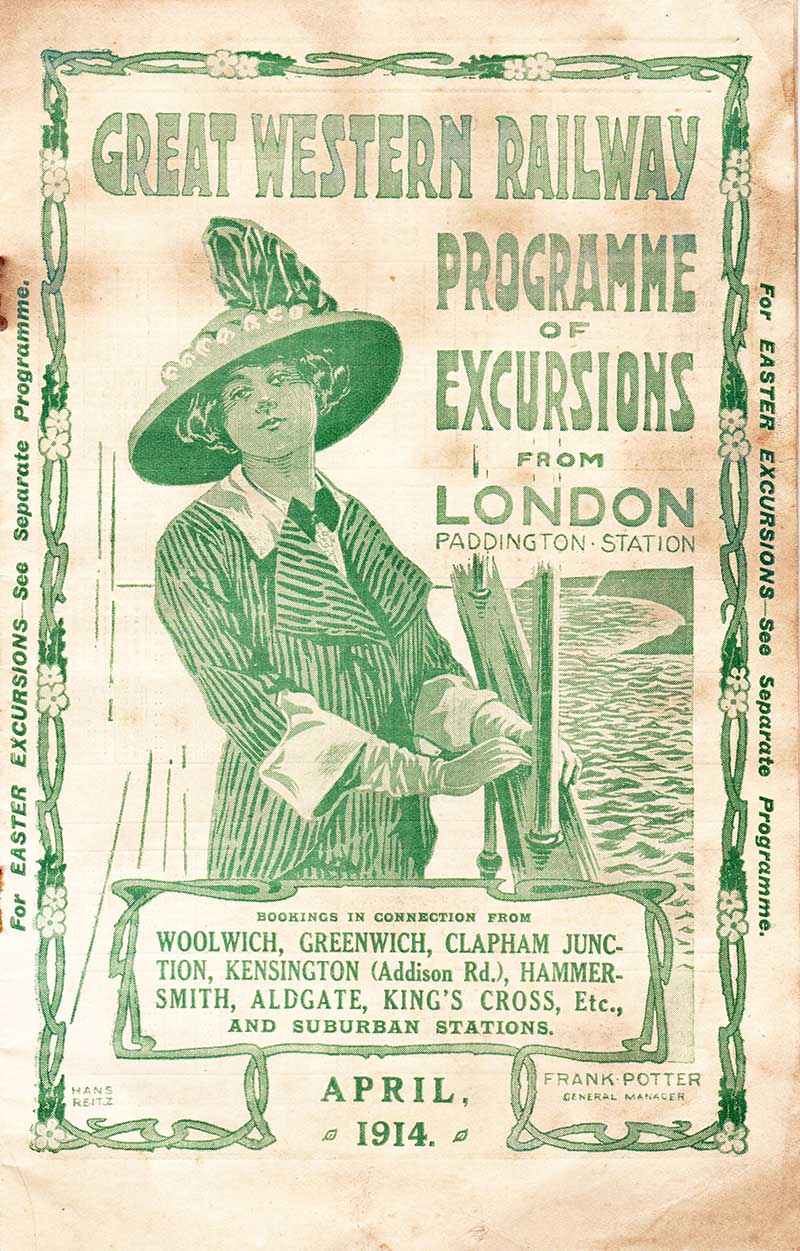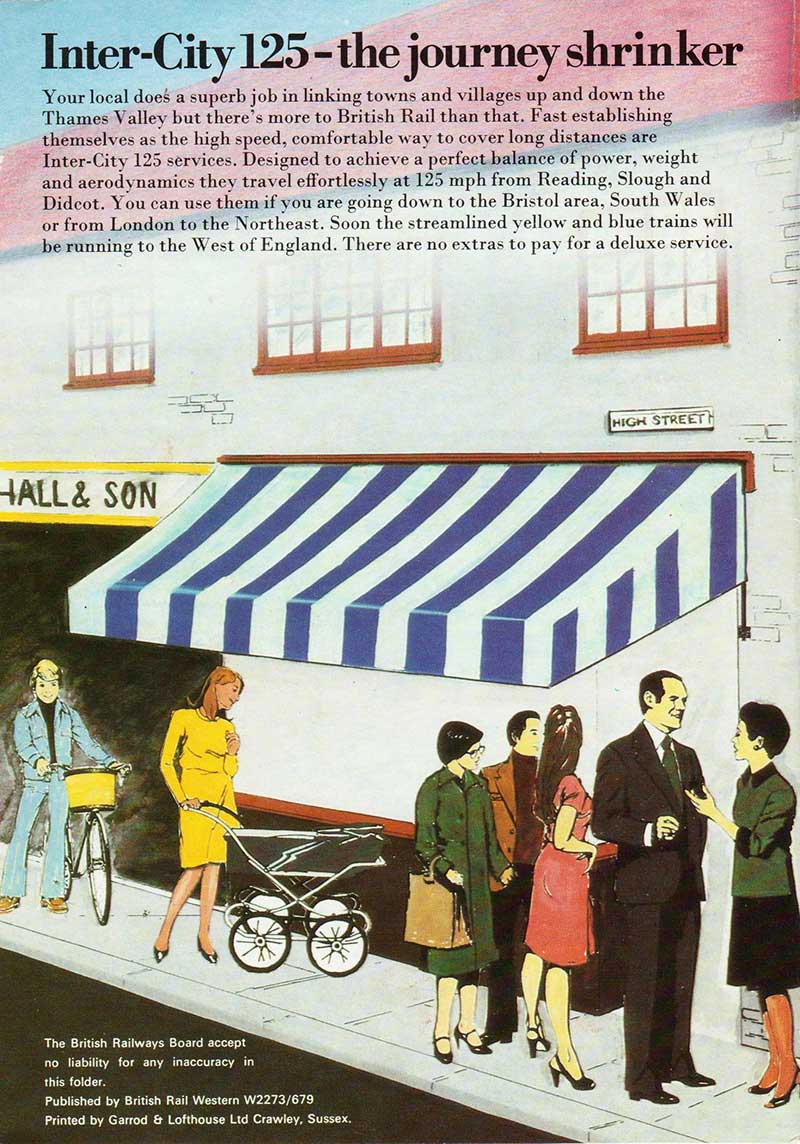Home » Other Articles » Tuesday Treasures Index » Tuesday Treasures - May 2022 - Tuesday Treasures - May 2022
Tuesday Treasures - May 2022
TUESDAY 31 MAY
A Royal Coronation
In our February Blog we detailed the extensive BRWR train arrangements for the funeral of King George VI based upon the selection of records we hold in the Great Western Trust Collection. Of course, a reigning monarch’s death, instantly enacts the official creation of their successor, in our case that of Queen Elizabeth II. Official it may be, but the institutional and religious procedures require a Coronation ceremony, with all the pomp and circumstance and nationwide public celebrations that accompany it.
Just as they had to do so for Royal funerals, the railway companies had to be prepared for Coronations, but in those events, to manage alterations to their established, current train services.

Our blog today delves into our records of two Coronations that the GWR and BRWR had to accommodate. The first illustration is that of our present Queen, a pamphlet covering entire Through Passenger Train and Boat Sailings on 1 to 3 June 1953. Yes, in stark contrast to our present railway service, BRWR inherited from the GWR, boat services to Ireland and the Channel Isles, hotels and a system-wide road cartage infrastructure. As our pamphlet explains, the changed train services were such that separate publications covered local services per district. The pamphlet illustrated ran to 15 pages of changes, and helpfully, the local service changes were published in five, differently coloured pamphlets, one for each district.
Our second illustration harks back some 51 years from 1953 to the similar publication, but this time by the GWR for the Coronation of King Edward VII and Queen Alexandra planned for 26 June 1902.

Here however, such were the extent of the service alterations, that this pamphlet only details those for the Birmingham and Worcester Districts, and all other districts would have had similar pamphlets.
As we now know, these plans were largely redundant because King Edward became seriously ill with appendicitis a few days before the Coronation date, and it developed into peritonitis. The Coronation was postponed, his surgeons carried out an operation on 24 June and the delayed Coronation took place on 9 August that year.
Our companion ‘Going Loco’ Blog of last Friday, gave a wide ranging introduction to the railway locos and carriages at Didcot Railway Centre that have direct or close association to Royalty. Hardly surprising when the GWR proudly publicised its “Royal Route” credentials, initiated by Queen Victoria herself using the GWR for her first ever railway journey, broad gauge of course!
Do visit us at Didcot over the special Jubilee holiday celebration period to enjoy and admire these wonderful Royal items.
TUESDAY 24 MAY
Changing Times and Changing Fashions
In a recent blog we illustrated a GWR pamphlet issued in June 1914 advertising excursions to London in the last summer before World War 1. Its cover was perhaps, to our current age and interests, a somewhat dated but nevertheless attractive combination of an iconic London scene plus for GWR enthusiasts, an equally iconic image of a Churchward locomotive on an express.
Our blog today, takes two more advertising pamphlets, from our Great Western Trust collection, but they have been chosen to demonstrate the impact of very changed times and attitudes from 1914 to 1979 no less.
The first is a companion of our June 1914 one, in that in April 1914, the GWR focus was now on excursions from London, and it added helpfully, that a separate programme was issued to cover the Easter holiday period.

The cover artist’s sketch by one Hans Reitz can only further emphasise the ‘upper class’ clientele that this pamphlet was meant for. A very expensively dressed and very confident lady of substance, with a ‘snooty’ facial expression, aboard probably a Thames river pleasure boat, stares at us with disdain? We hardly think any carriage other that first class would be her chosen ticket!
Fast forward some 65 years however, and our second pamphlet by BR Inter-City Western Region, is very different! It is a simple but effective trifold design, with the cover section showing the larger than life Ticket Office, itself stretching the theme to a Local Pub (note the DMU banner!), opens to reveal on its reverse, the open door of a BR MkII carriage next to a platform. The back cover also extends the theme to a modern street scene. What is most striking however between the design differences of these two publications, is the ‘fashion’ and the ‘target audience’. Those of a particular age will remember and may have strutted their stuff in bell bottom trousers, loud ties, and for ladies of all ages, knee length skirts! Wow, and to connect trains with pubs…what decadence!?


We have often commented, that the Trust collection, has so much more to offer than the purely railway transport story alone. We truly live in fast changing times, and more examples of that impact will be covered in our future blogs based upon our collection.
TUESDAY 17 MAY
From the Great Western Trust’s poster collection we bring you an 85-year-old item which dates from the Whitsun holiday of 1937. Until the introduction of the late Spring bank holiday in 1972, the day after Whitsun (or Pentecost) was a public holiday. Pentecost is a movable feast, occurring on the seventh Sunday after Easter.

When the circus came to town it was always a major event and there would have been much excitement in Swindon in the days leading up to the show.
Koringa, ‘the only female fakir in the world’, was the leading act in Bertram Mills Circus in the time when it was socially acceptable to exploit animals and be entertained by midgets. She was famed for walking over broken glass and hypnotising crocodiles, walking on their heads in a specially designed tank whilst draped with a necklace of live serpents. Although her green makeup and outlandish hairstyle was supposed to evoke an air of Oriental mystery she was actually born Renée Bernard in Bordeaux in 1916. In addition to her performing talents she fought with the French resistance during the Second World War. She retired in 1968 and died in France eight years later.
The poster has an equally remarkably story. It is extremely rare and is stamped on the rear ‘Superintendent's Office, Great Western Railway, Bristol. Sanctioned for Exhibition’. In October 1986 a Bath auction house offered for sale a number of posters that were found under the linoleum during a house clearance. In the days before fitted carpets, most people had their floorboards covered in old newspapers then lino with various strategically placed rugs and mats. In fact moving house often meant rolling up the lino for re-use. Luckily, the railway employees at the house in Bath used old posters instead of newspapers and they survived long enough for the Trust to acquire them. How very fortunate.
TUESDAY 10 MAY
Excursions in the Last Summer Before War
An added bonus of the vast archive of railway excursion publicity that the Great Western Trust holds in its collection, is that it covers the broadest timelines of the GWR and BR Western Region eras and consequently, beyond train details, it provides a view on the social graces and interests of the generations so covered.

The illustrated pamphlet is of course sadly tired and partly soiled by having been in a GWR station loft or out-building since it was published in June 1914. That fact alone is another revelation of the strict regime each station was instructed to observe, the GWR alone had a detailed set of instructions on what should be kept and for how long. Even recycling is nothing new, as the Trust collection benefits from numerous older documents whose plain back pages were reused in both World Wars!
That said, frankly, we are blessed that by default over a long time, so many such items as that illustrated should never have survived to our day. Studying it closely, it was one of no less than 15,000 printed, for wide distribution at the target district stations, so it is an extremely rare survivor!
Its wonderful artist's cover image is at once designed to capture the attention of passing passengers. The inclusion of a Churchward era Saint class locomotive reflects what became a very long running design motif well into the BRWR era, by promoting the key motive power of each age, as we have previously blogged even to include Diesel Hydraulics and Diesel Multiple Units.
The social interest aspect of this pamphlet relates to the list of the ‘London Attractions’ which are certainly a step away from those which would attract current passengers! Quite what the ‘Salvation Army Demonstration & Festival’ might offer is a wonder, or the ‘Tonic Sol-Fa Association Festival’, but we assume the ‘Rubber, Cotton Fibres & Tropical Products Exhibition’ would have inspired the folk of Oxford, Abingdon, Witney, Marlborough, Savernake & Reading etc, to revise their domestic plans and catch those trains?
Rather poignant, is the date of this item, June 1914 with declaration of the so called Great War only a few weeks away in August 1914.
So much to discover and wonder about in this very modest, miraculously surviving document.
TUESDAY 3 MAY
An Historic Locomotive!
The Great Western Society has just very proudly commissioned the operational restoration of GWR Castle Class Loco No 4079 Pendennis Castle.
The photographs and the ‘Going Loco’ Blogs on the Didcot Railway Centre Facebook page and website provide a rich demonstration of that event and the story giving the reason why this locomotive deserves its high status in GWR history.
For our more humble part, the Great Western Trust has a small display in our Museum & Archive devoted to this locomotive, including the unique GWR & BRWR engine data sheets of its service record up to the fateful incident on that special train near Westbury.
Today our blog illustrates a rather surprising hardware item that BRWR Swindon Works had manufactured precisely because 4079 is unique! Readers may be aware of the King class and Warship class aluminium plaques Swindon produced in limited editions of 3,000 individually numbered plates, issued with a small paper certificate of authentication. Recognising the unique importance of 4079 however, they did the same to mark her Diamond Jubilee, and our example is No 85 of that series.


The 40th anniversary plaque in original aluminium finish and The painted version on display in the Museum.
Yes, it's looking rather tired but in the Museum display, another example which was acquired privately, has been very lovingly painted in GWR livery!
Ours is in the as issued condition, with the effect of later years marring the original matt black painting by which the raised lettering was emphasised.
Still, we should remember that after its creation in 1984, it is after all in its 38th year, but our beloved full size, working 4079 is but two years shy of a century!!

The original name and number plate on display in the Museum.
The Museum is also displaying a set of the original name and number plates for Pendennis Castle. The plates carried on the locomotive are replicas while the originals reside in the museum. Remarkably, the locomotive carried the originals during her time in Australia. When the time came for her voyage back to the UK, the name and number plates were removed, along with the whistles and safety valve bonnet, so they would not disappear in one of the many ports the ship called at en-route. These valuable items travelled back to the UK by air, courtesy of Qantas.

Could the brass letters from the 1895-built Pendennis Castle's nameplates have found their way onto No 4079 nameplates?
There is speculation that the well-worn brass letters on the original nameplates have been recycled from the original Pendennis Castle nameplates of the Duke class locomotive built in 1895. Her nameplates were removed in 1923 to avoid confusion with the forthcoming Castle class locomotive and the brass letters could then have been removed from the backplate and riveted onto a new steel backplate for No 4079.
Please visit our website, or better still Didcot Railway Centre where this glorious machine safely resides.

Pendennis Castle leaving the shed yard on 29 April.
Didcot Railway Centre Newsletter
Stay up to date with events and what's going on at Didcot Railway Centre.
You may unsubscribe at any time. We do not share your data with 3rd parties.